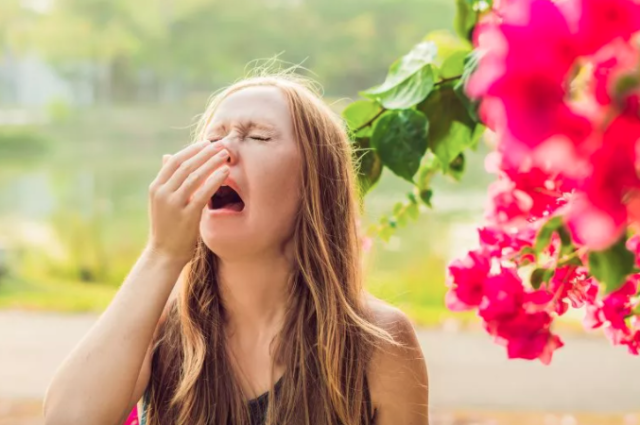What can be an allergy in August and how to deal with it

Pollinosis is an allergic disease caused by plant pollen and manifests itself in the form of rhinitis, conjunctivitis, dermatitis, and bronchial asthma.
It seems that the hardest time for hay fever sufferers is in the spring and early summer, but this is not the case. From August to the end of September, a new wave of allergic reactions begins, caused by a dusting of Asteraceae, haze, nettle, and weeds.
Pollinosis symptoms
The symptoms of hay fever are very similar to those of ARVI, so it is not immediately possible to suspect an allergy. Pollinosis usually presents with severe itching in the nose and eyes, watery eyes, paroxysmal sneezing, and nasal congestion. However, in an advanced form, more severe symptoms can also appear:
- dry cough;
- sore and dry throat;
- hives, rash;
- swelling of soft tissues.
To distinguish an allergy from a cold, you can drink an antihistamine, then, when you feel better, it will become clear that it is the allergy that is bothering you.
Flowering calendar. August
Allergies in early August are usually caused by pollen:
- wormwood;
- wheatgrass;
- nettle;
- sunflower;
- poppy;
- elecampane;
- ragweed;
- plantain;
- swans.
At the end of August, they begin to bloom:
- digitalis;
- chamomile;
- thistle;
- yarrow;
- thyme;
- bells;
- cyclachene.
How to treat seasonal allergies
Before starting treatment, you need to understand what exactly causes it. Therefore, the first step in solving the problem is identifying allergens.
Skin allergy tests are a quick and reliable way to identify your personal allergen. In modern medicine, three types of skin tests are used:
- Scarification – several scratches are made on the hand, into which a certain allergen is introduced. After 15-20 minutes, a reaction develops, and the doctor evaluates the result. If the scratch begins to redden, enlarge and itch, then the allergy is confirmed.
- Prik test. On the principle – the same as the scarification, only small punctures are made instead of scratches.
- Patch test (application). Allergens are glued with patches on the patient’s back and keep them for up to 48 hours. After that, the doctor evaluates allergic reactions to one or another component.
After the allergen is identified, it is necessary to reduce contact with it and start taking antihistamines as prescribed by a doctor.
Prevention of seasonal allergies
- Avoid contact with the allergen.
- Eat a hypoallergenic diet that includes cross-allergic foods.
- Do wet cleaning and ventilate more often.
- Take a walk after rain or in the evening when the concentration of allergens in the air is minimal.
- Don’t bring wildflowers home.
- Moisturize the nasal mucosa.